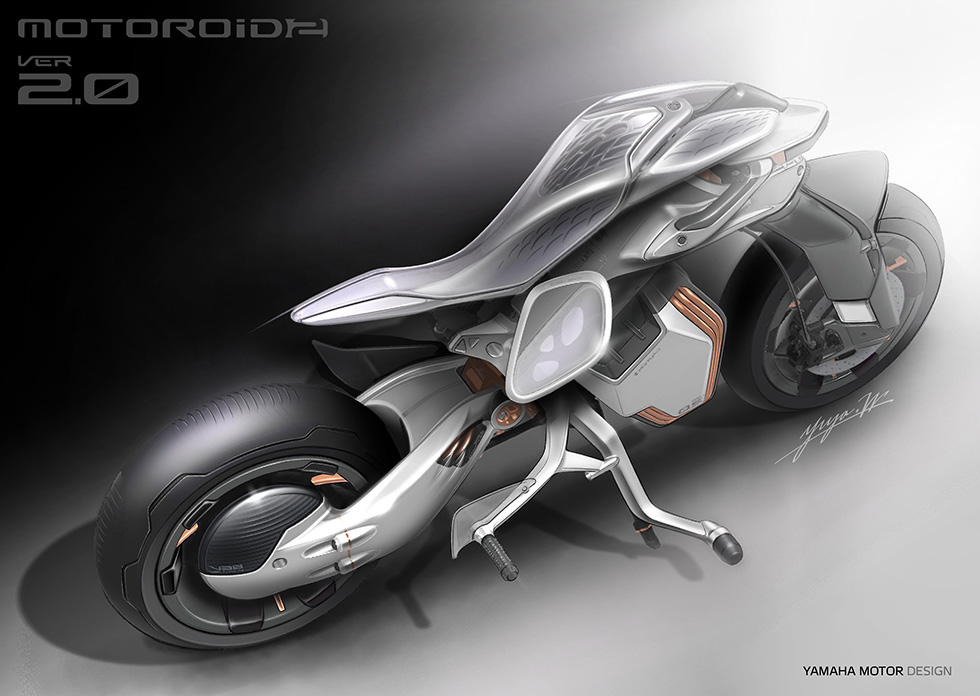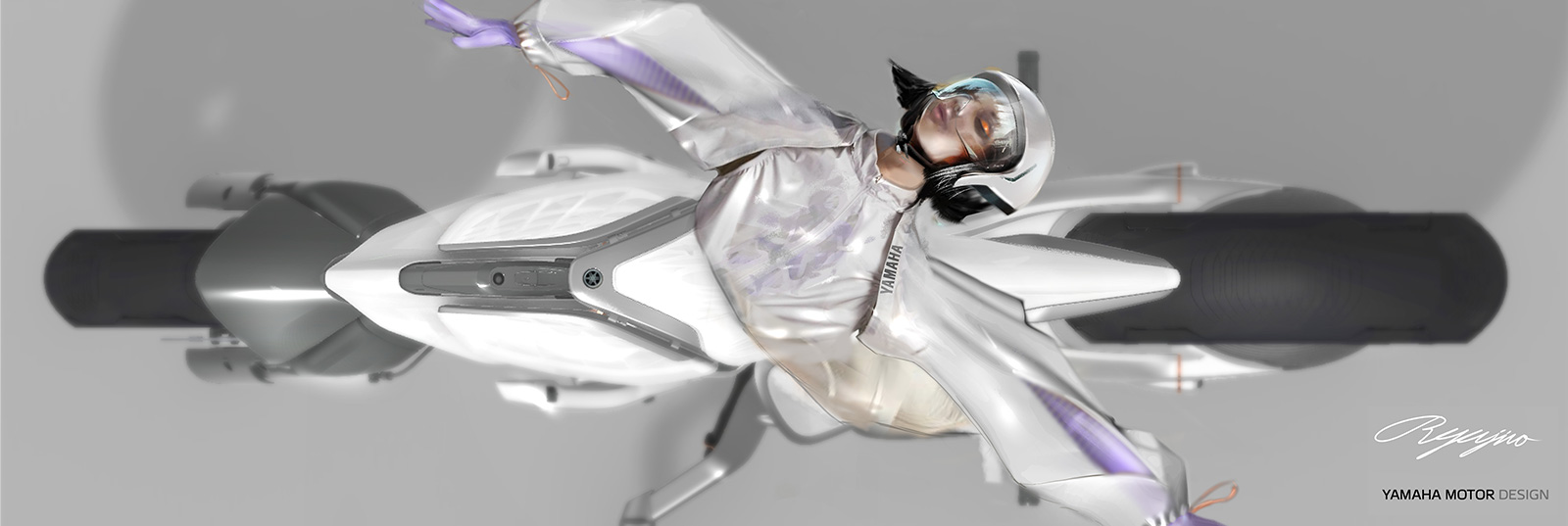
During the 2017 Tokyo Motor Show, a veil was removed at the Yamaha booth to reveal a particular machine, the “MOTOROiD.” Using cameras to recognize its owner, it autonomously stood up, moved forward, and retreated, in response to their voice or gestures. At times, when looking at the way that it meandered and frolicked with the owner as if it were dancing, one could not help but get the premonition of the dawn of a new relationship between a man and machine. The MOTOROiD, despite being a concept model, evoked a wide range of responses, such as searches for the vehicle body price; however, included among this was the feedback not expected by the development team—MOTOROiD is so cute!
By pursuing functional and structural optimization, the MOTOROiD has become a machine with rather inorganic styling, lacking elements that would make it applicable as a pet. Despite its appearance, however, people have identified a certain familiarity and affection in its unique, lifelike behavior, engendered by its advanced robotics and intelligent technology.
What is it about the “vitality” of a machine that can capture the human heart?
Once this value further evolves and is realized, what kind of relationships can be established between machines and people?
Yamaha has begun development aimed at its new challenge, the “MOTOROiD2.”
With the first generation of the MOTOROiD, people spoke of the fact that the way the machine obeyed the call of the owner was a relationship “akin to that between a person and a pet.” However, this was more likely a master–servant relationship between the person issuing the instructions and a machine obediently following them. By making this relationship more sophisticated, the person and the MOTOROiD would eventually have a relationship similar to that of friends who are able to communicate and cooperate with each other. If motorcycles and people can respond to each other through communication, this could generate a yet unknown Jin-Ki Kanno*. With the aim of examining this new relationship between people and machines, the concept of a “your indispensable companion” was established, and the design of the MOTOROiD2 gradually began taking shape.
* Technology born from Jin-Ki Kanno seeks to deliver users the seductive exhilaration felt when they truly become one with their machine.
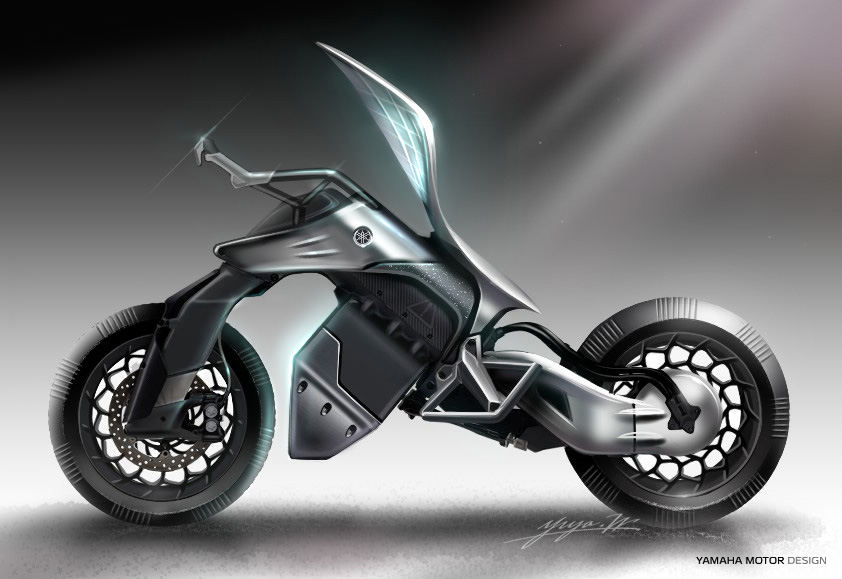
This concept is strongly reflected in the interface through which the machine and human respond to each other. With existing motorcycles, there is the assumption of “input” as the means by which the rider transmits their thoughts to the machine, through the use of the handlebars, seat, steps, etc. However, with the MOTOROiD2, most of its exterior is a specialized interface intended to promote mutual interaction between the human and machine. The best example of this is the haptic device, implemented as the iconic key structure known as the “LEAF.” It is equipped with an optimized transform feature that responds to the mounting/dismounting situation, and not only accepts the rider’s body depending on the riding posture but also works as a “tactile sense,” that receives and responds to the rider’s intentions.
The machine also incorporates light-emitting expressions to visualize tactile responses, allowing the rider to experience the “vitality” possessed by the machine by responding to the light of the MOTOROiD2.
The LEAF has an organic and graceful form and features a semi-transparent finish, which is very uncommon among motorcycle exteriors. The purpose of this is not merely to enable light transmission but also to allow for a sense of harmony between the MOTOROiD2 and the varied and diverse lifestyles and preferences of its owner.
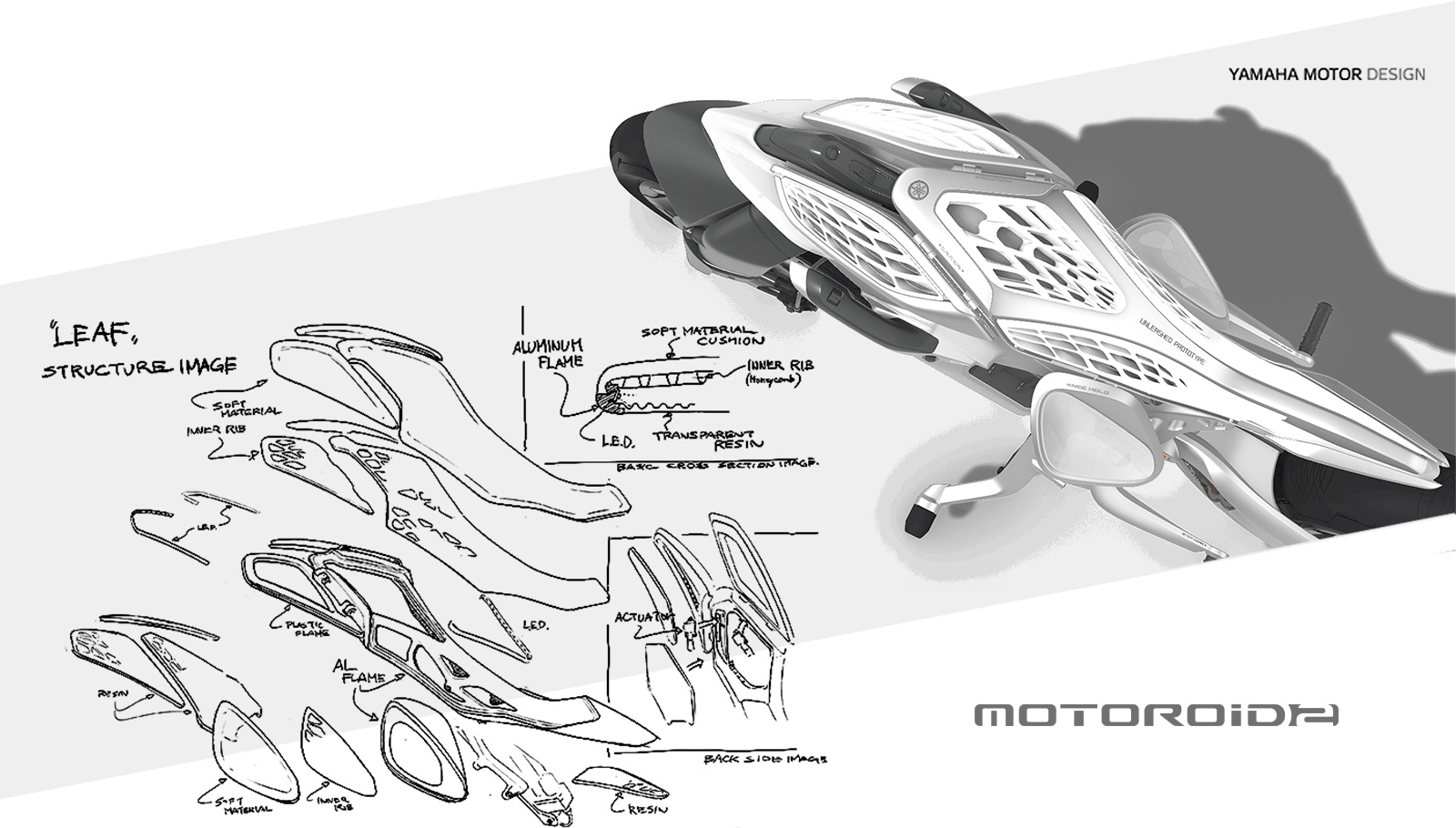
The existence of LEAF has also introduced a riding position that was previously not thought of: one that liberates the upper body. Upper body movement in legacy motorcycles has been restricted due to operational constraints, necessitating an advanced level of rider skill and experience to realize a sense of unity with the machine equivalent to that between a human and a horse. With MOTOROiD2, the rider is able to transition between three levels of riding, namely the legacy riding posture using the handlebars, seat, and step; a jockey style in which the knees are placed on the newly fitted “knee-hold”; and the “centaur” half-man, half-horse style, in which the rider can stand up, thus completely freeing the use of the upper body. The machine responds to each of the postures, respectively, and can transform itself into the optimal position.
“The human is fused with the machine as if it were a living creature, allowing any rider to experience
Jin-Ki Kanno”
The development team has reconsidered the existing two-wheel layout and realized a riding position with an unprecedented level of beauty.
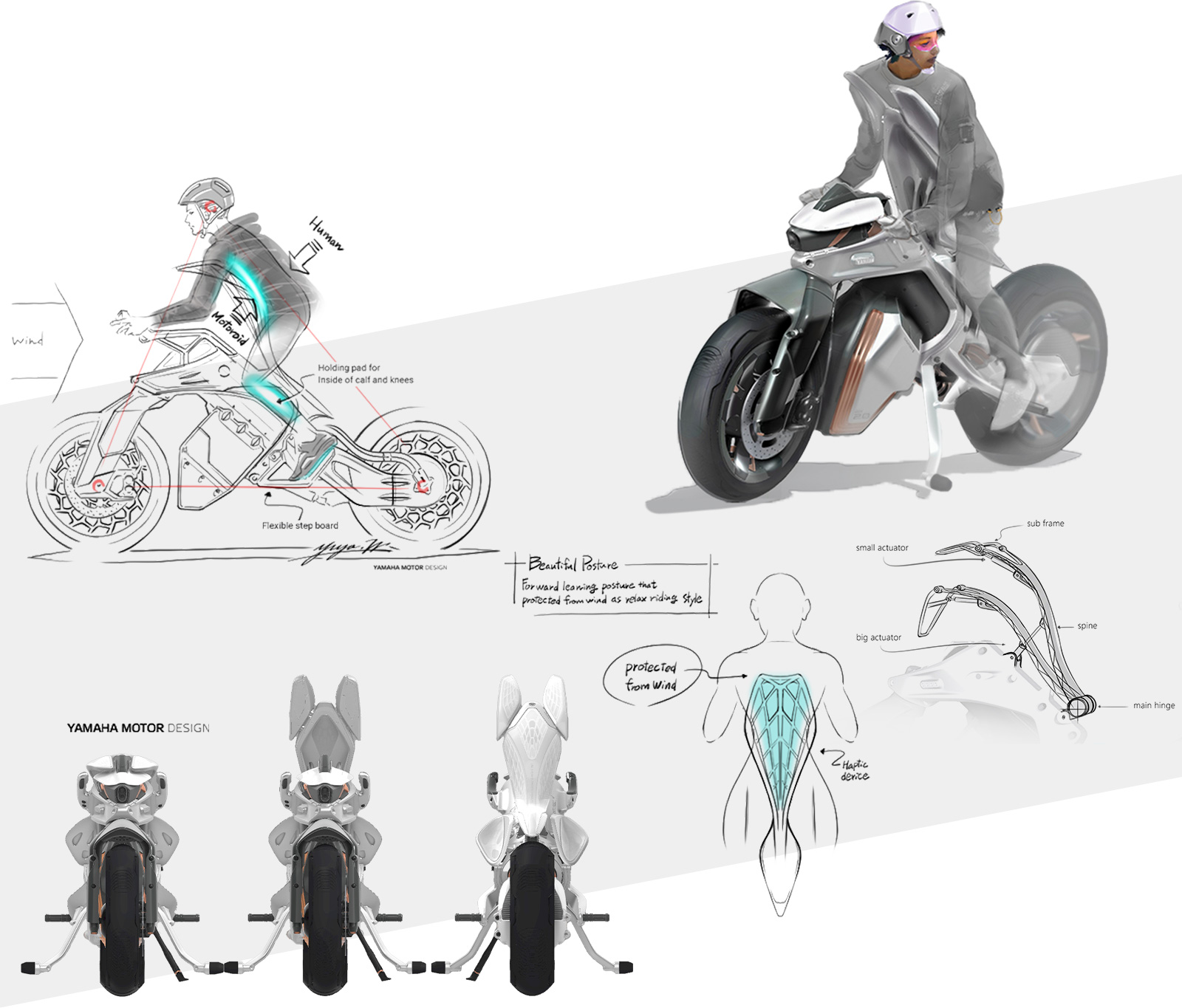
The key technologies of which the MOTOROiD is composed of are further evolving in their respective fields. The balance control technology AMCES, which enables the machine to be independent, maintains balance by shaking the weighted battery part while retaining the basic structure of the vehicle. This has been updated to realize more complex and stable autonomy by adding coordination with other functions such as steering. Balance is controlled by changing the control value according to the rider, depending on whether the vehicle is occupied. Furthermore, when matching the multiple riding positions previously described, development for setting the appropriate parameters for each was said to be extremely problematic.Result show that, even in the low-speed range where conventional motorcycles have the greatest difficulty, it is able to realize autonomous driving with natural movements that are coordinated with the movements of the rider.
Cameras for image recognition AI were added in four directions (i.e., front, left/right, and a position where it could capture the rider’s face). There is constant switching between the cameras to capture the rider’s intentions, and by linking AI to the rider, a variety of recognition functions can be enhanced. For example, by maintaining an appropriate distance from the owner through sensing, it is also possible for people and machines to walk or run alongside, as if they were going out for a stroll. There have also been significant updates in the area of recognizable gestures, and the aim is for riders to be able to communicate their intention to the machine through sensory gestures, and for the machine to respond to these gestures accordingly.
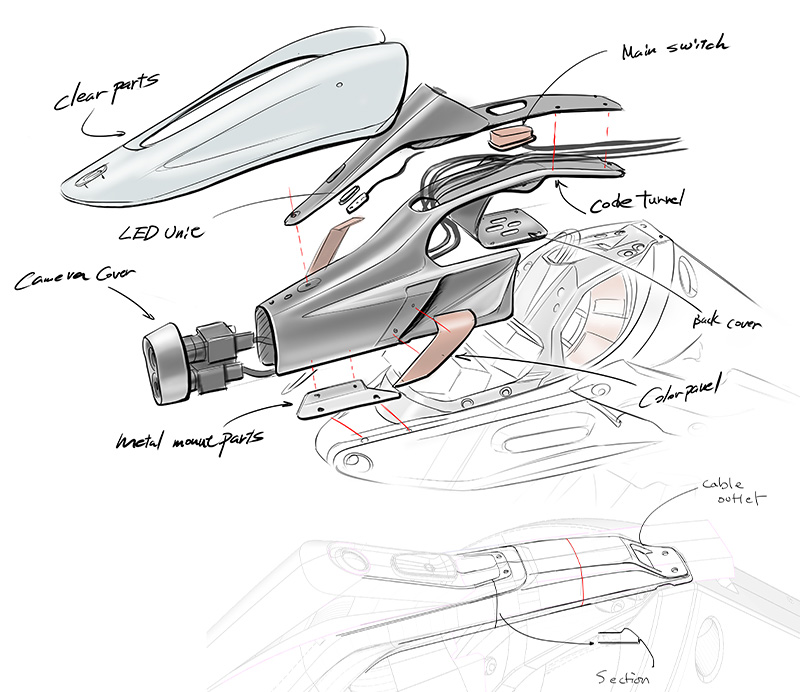
Haptic devices can further function as interfaces, by loading them with the previously described LEAF. In addition to focusing on its technological aspects, we pursued gentle, creature-like movements that were true to the original concept. The image demanded by the designers was that of beautiful movement replicating nature, such as the buds of a flower or a bird spreading its wings. Rather than just selecting a motor that can achieve this, precise controls have been incorporated to link it to light responses, as well as other measures to express “vitality” through technology. The designers also searched for synergy between the semi-transparent exterior and luminous expression, whereas the development team also collaborated closely to pursue “vitality,” for example, by searching for materials and verifying different surface-treated patterns.
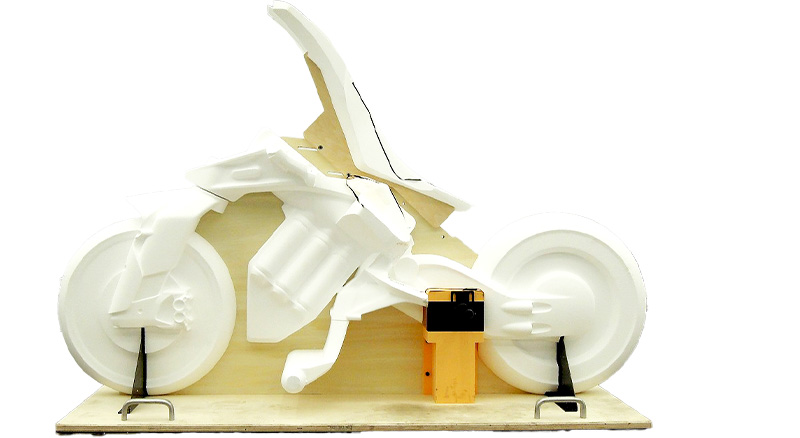
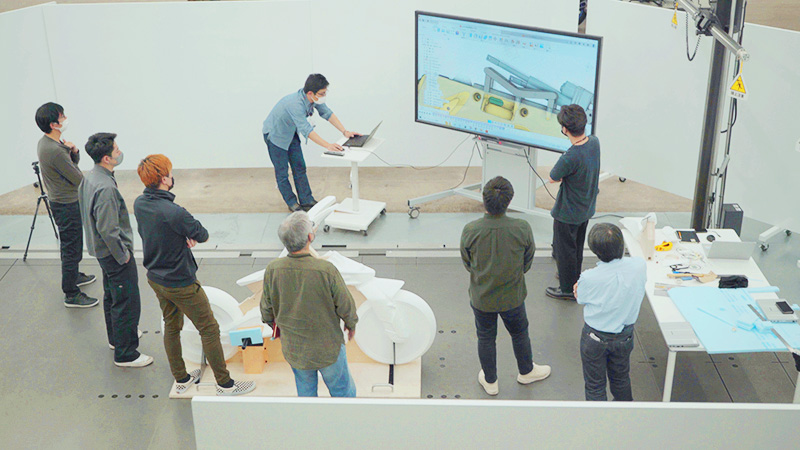
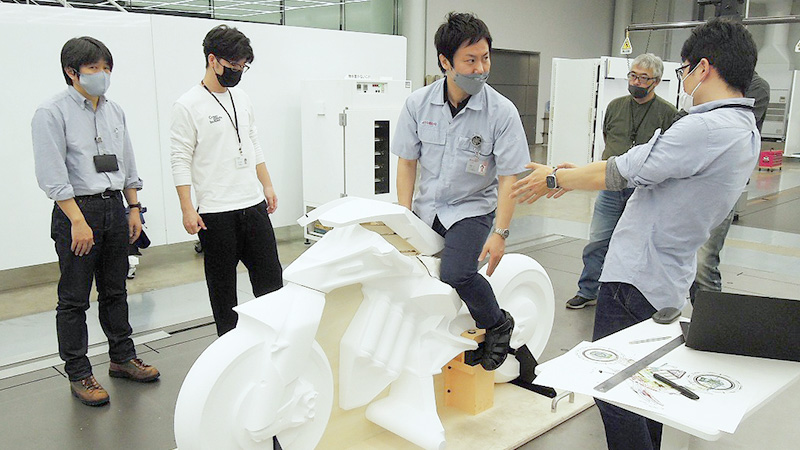
The MOTOROiD2 stands before us like a kind of mysterious life form. If you call out to it, it approaches you naturally, glowing as if to provide you with feedback, and inviting you to lean against its beautiful body. The rider’s upper body, like a wing catching the wind, is eventually released, enabling the rider to glide through the air with the machine. In this response, lies the mutual trust between human and machine, to the level of that of your indispensable companion, opening up a new world of Jin-Ki Kanno. Our own enchantment with this unknown scenario also takes on the form of human–machine sensation.
Although the concept and the main technologies behind the MOTOROiD2 have been announced, Yamaha is yet to announce any details of the manner and situations in which it can be enjoyed. In other words, the question of what vision can be depicted for this machine and the future is a question posed to the user. Yamaha, too, is surely looking forward to this unforeseen future and is dependent on the free, rich imaginations of all of us to find its expression.
